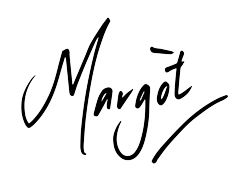“Your life is your story. Write well, edit often” – Susan Statham
As we return to work at the beginning of a new year, it’s never too long before we switch back into our usual high output gear after the break. However, all too often, we accelerate into our usual workflows without taking the opportunity to think more consciously and carefully about how we want to architect our lives and careers for the year ahead and beyond. Our momentum is halted, and our career trajectories can easily stagnate.
Zoning out is easy to do when your career is on autopilot. How often have we travelled home at the end of the day, only to arrive with no real sense of time or conscious thought to the direction we were taking? We simply found ourselves there before we knew it because it was something that we had done a million times before. We didn’t have to put any real effort into the directions or paths we needed to take.
While most of us can travel on familiar paths in autopilot, we can’t afford to run our careers or businesses in this mode no matter how familiar or well-worn the path before us has been. Yet it is often not until a jolt out of the blue occurs – a business restructure, the resignation of a key team member or the loss of a major client – that we seem to click back into an acute awareness of the landscape around us. When this jolt happens we find that we have assumed way too much and responded way too little to the everyday events and things surrounding us.
Recently I have found myself working with several organisations navigating significant business change. For many individuals this has meant substantial changes to roles and the way they do business or at the other end of the spectrum, redundancy.
What has been interesting is the varying way in which these individuals have responded to their situations. While nearly all have found it initially difficult and confronting, some are navigating the changes with a strong sense of awareness about what the opportunity means for them and a feeling of control and ownership. For others however the options are met with nothing short of significant loss and fear for the future.
While the autopilot mode of going through the motions may yield results in the short term it can have a significant impact in the long term on how we think, assess, make decisions and move forward with our roles as leaders and in our careers. It can easily leave us feeling disempowered and lacking control. A key danger of the business and leadership autopilot mode is assuming that the past will ensure the future. The reality is the knowledge, skills and relationships that have got us to where we are today are not necessarily going to take us to where we want to go tomorrow. What will support our forward momentum, is our ability to embrace new understandings, new solutions and new mastery. And you can’t do this without being acutely aware of what is happening around you, how you respond and acknowledging that it is you who is sitting in the driver’s seat of your career. As is so often said, businesses own the roles while you own your career.
Before you find yourself in situations that see you calling out Mayday or sending off the emergency flares, I would encourage you to consider the following six actions that you can take to flick off the autopilot switch and regain a sense of career control:
Mix up your routine: Undertaking the same routine day in and day out often heightens the danger of ‘status quo’. It dulls our senses and ability to spot the opportunities and obstacles that lay before us. By changing up our everyday routine we are more likely to accurately recognise, assess and act on the current state of play in a more informed and timely manner.
Understand your strengths and weaknesses: Gaining an accurate view of what our strengths and weaknesses allow us to focus on what we do best, identify ways to collaborate with those whose knowledge and skills complement ours and stay out of what we don’t do well.
Focus on honing your strengths: Often we spend wasted energy and time on trying to ‘fix’ our weaknesses, when what we should be doing is focusing on how to hone and elevate our strengths. It is only when we do that we will be able to maximize our productivity, efficiency and levels of fulfillment in the tasks at hand.
Identify where they are most valued: To recognise where your knowledge and skills are best regarded – both immediately and in the long-term future – requires an investment of time, energy and planning. Build a road map that identifies where they are currently being used, how and with whom you should be engaging with to ensure that you build future currency in your career.
Invest in your own learning: We also often relegate our future learning and professional development opportunities to the organisation we work for. The danger is when business belts are tightened often the first thing that disappears is training. By taking proactive measures to invest in your own learning you will ensure that your skills, knowledge and networks remain up to date, fresh and relevant, which in turn sees you well-positioned for your future preferred opportunities.
Build purposeful networks: Invest in the right networks – both internally and externally – and dedicate time and energy to them. If necessary, conduct an audit to ensure that you have the right people to support where you want to go and you eliminate those that detract you from your path.
As you develop your awareness and switch off from ‘auto pilot’ mode, an effective way to turn your attention inward to your career history, desired trajectory, is the document that articulates this; your resume.
As your resume tells your professional story and highlights both your capability and your potential, it is naturally imperative to constantly refine and update it. Revisiting it on a regular basis can also help you to identify gaps, strengths and weaknesses that may also give you an insight into your future ambitions and what needs to change in order to achieve them. You can do this by following my Resume Checklist, which I have developed to help guide you through this process.
Switching out of auto pilot mode and back into ‘go-mode’ requires a shift in both mindset and habits. Whilst it does take an up-front investment of both energy and time the benefits are enormous and long lasting: career confidence, clarity and purpose. What can you do today to flick off the autopilot switch?
As always I would love to hear your thoughts.


